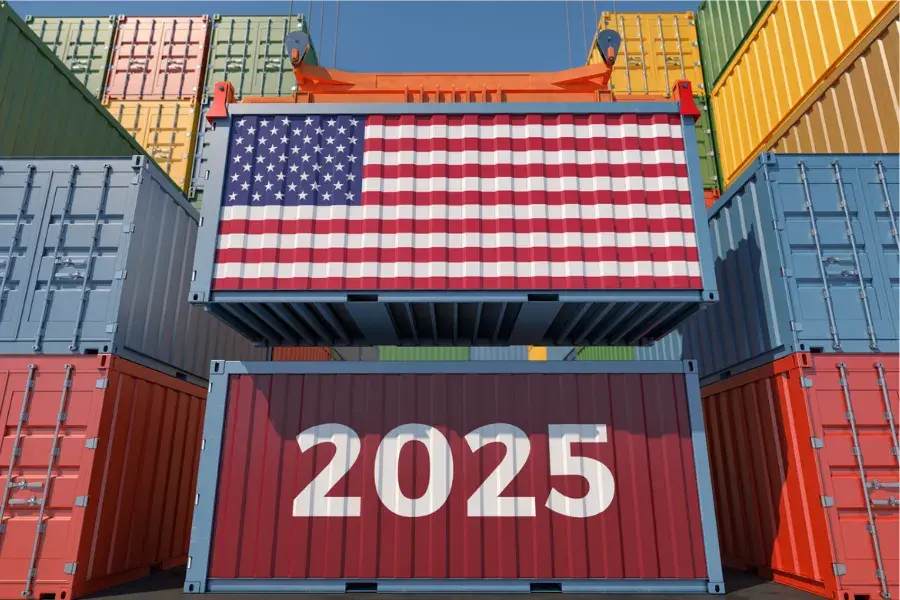Retailers are facing a new wave of tariff pressure that’s shaking up inventory strategy at every level. As global trade policies continue to shift, so does the cost behind planning andpurchasing decisions, sourcing relationships and supply chain timelines. For many, the immediate concern is rising inventory costs. However, the reality is that it’s all about how retailers plan and navigate uncertainty, particularly as tariffs create immediate and long-term effects on margins, stock levels and purchasing decisions.
Some retailers are hitting the brakes—they’ve canceled or delayed future orders to cut costs as quickly as possible, but abrupt moves often come with consequences, particularly within the supply chain ecosystem. These mass cancellations are leading to destabilized pipelines, with pressure pushing upstream to manufacturers. Widespread cancellations will flood the market with excess inventory, leaving manufacturers stuck, causing delays in the production of future products.
Others, however, are going in a completely different direction. Some retailers are choosing to stockpile inventory in hopes of avoiding upcoming cost increases. But this also comes with risks—overbuying the wrong products can lead to imbalances across networks, excess markdowns and wasted money. Rather than reacting with urgency and stockpiling, it’s better to use intelligent price elasticity models to preserve revenue growth without over-committing inventory.
History has shown that reacting out of urgency can lead to missed opportunities and slow recovery. The real solution isn’t about reacting faster—it’s about responding more intelligently and strategically. 
Implementing AI into your tariff strategy
Modern retail calls for flexible, responsive solutions built on accurate, forward-thinking, actionable insights. AI is acting as a strategic enabler, providing retailers with real-time visibility, predictive modeling and automated decision-making at scale. When tariffs change, retailers can act confidently and quickly—rather than relying on gut instincts and static spreadsheets. AI-driven inventory management and planning systems have the ability to process thousands of signals—from demand, lead times, supplier reliability and transfer costs—to provide intelligent recommendations. This means that when tariffs hit, retailers are empowered to make decisions based on data, not gut instincts. It’s not just about what now—it’s about what’s next.
AI-powered demand forecasting is helping retailers anticipate the supply chain effects of tariffs. If a sourcing change causes product delays or disruptions, forecasting engines can quickly readjust demand across channels, giving retailers more room to maneuver before snowball effects occur. This helps retailers adjust before snowball effects occur, cutting back in lower-demand areas and reallocating to higher-opportunity stores.
In addition, AI is enabling better assortment planning. With tighter budgets and increasing input costs, retailers are struggling to offer a wide range of products. AI is helping to sharpen the focus, identifying high-performing SKUs and flagging underperformers to give planners a clear idea of where to hone in and where to pull back. This insight is especially critical when purchasing power is strained. Increased product costs, combined with tighter budgets, mean retailers need to invest wisely, especially in high-performing SKUs, to avoid overstocking on underperformers.
When it comes to pricing, AI is a game-changer. As tariffs drive up base costs, retailers need to strike a balance in moving product without encroaching on margin. AI-powered retail solutions can optimize inventory across channels, ensuring each product is in the right place at the right time to sell. This leads to fewer emergency transfers, lower shipping costs and happy customers—which is especially important when retailers have leaner assortments.
With margins under pressure from rising costs, dynamic pricing strategies powered by AI allow retailers to raise prices without losing customers by analyzing price elasticity and ensuring adjustments align with consumer demand. This capability is essential for staying resilient as international economic conditions shift.
Resilient supply chains built for speed and agility
AI is giving retailers the agility they need to stay nimble in uncertain times. It provides alternative scenarios, runs simulations, and gives planners more room to maneuver as trade tensions evolve. Flexibility is key to building a better supply chain strategy that can withstand whatever disruption comes next. At the end of the day, tariff pressure may come and go, but the need for better, faster, more confident decision-making will not. Knowing where to increase prices without losing customers will be critical, and AI can help identify the optimal points for price increases and markdowns, ensuring they strike the balance between margin preservation and customer retention. AI is the key to leading with clarity, control and growth.
scenarios, runs simulations, and gives planners more room to maneuver as trade tensions evolve. Flexibility is key to building a better supply chain strategy that can withstand whatever disruption comes next. At the end of the day, tariff pressure may come and go, but the need for better, faster, more confident decision-making will not. Knowing where to increase prices without losing customers will be critical, and AI can help identify the optimal points for price increases and markdowns, ensuring they strike the balance between margin preservation and customer retention. AI is the key to leading with clarity, control and growth.

